- Home
- Arthur C. Clarke
The Coast of Coral
The Coast of Coral Read online
Contents
Introduction
1. The Road to the Reef
2. Fair Dinkum, Etc.
3. White Water
4. Death of a Spearman
5. Enter the Cops
6. How to Call on an Octopus
7. In the Wet
8. Out to the Reef
9. Heron Island
10. The Stone Jungle
11. Rendezvous with Sharks
12. Devil on the Reef
13. The Wolf Pack
14. “Spike"
15. North to the Sun
16. Through the Torres Straits
17. Drifting for Shell
18. Pearls and Politics
19. Of Perilous Seas
20. A Chapter of Accidents
21. The Turtle Hunt
22. Aladdin’s Cave
23. The Last Dive
24. A Walk in the Dark
25. The Reef is Waiting
The Coast of Coral
An ibooks, Inc. ebook
ibooks, Inc.
24 West 25th St.
New York, NY 10010
The ibooks World Wide Web Site Address is:
http://www.ibooksinc.com
Copyright © 1955, 2002 by Arthur C. Clarke
Introduction Copyright © 2001, 2002 by Arthur C. Clarke
e-ISBN: 1-59176-007-0
Print ISBN: 0-7434-3507-9
To our newest friends in the oldest continent
A.C.C.
M.W.
ARTHUR C. CLARKE
THE COAST OF CORAL
Arthur C. Clarke is the world-renowned author of such science fiction classics as 2001: A Space Odyssey, for which he shared an Oscar nomination with director Stanley Kubrick, and its popular sequels, 2010: Odyssey Two, 2061: Odyssey Three, and 3001: Final Odyssey; the highly acclaimed The Songs of Distant Earth; the bestselling collection of original short stories, The Sentinel; and over two dozen other books of fiction and non-fiction. He received the Marconi International Fellowship in 1982. He resides in Sri Lanka, where he continues to write and consult on issues of science, technology, and the future.
The Coast of Coral
An Introduction by Arthur C. Clarke
Though I cheerfully toss astronomical periods of time around in my fiction, I find it hard to believe that it will soon be half a century since the 37-year-old Arthur Clarke sailed from wintry England for an underwater expedition. This move was quite a surprise to my friends, because a few years earlier I had published The Exploration of Space, and they wondered why my interests had made a hundred and eighty degree turn. The answer was simple: I realised that underwater, I could experience something very close to weightlessness—which I was unlikely to enjoy in any other way.
Looking into The Coast of Coral again after several decades, it now seems a message from another age. I am sure that much of the Australia I described has vanished without trace. In the hope of recalling it, I have left the text completely unchanged. However, a few comments are in order.
I am slightly embarrassed by my frequent reference to spear guns—which I've since done my best to get outlawed. But, if you have to catch your fast-moving dinner on a remote coral reef, their use is justified.
I am more embarrassed by my advice about walking on exposed coral reefs—DON'T DO IT! Far too many of the world’s corals have now been destroyed by legions of tourists trampling over them: the anchors of glass-bottomed boats have also made a major contribution. Fringing reefs can be much more comfortably and harmlessly viewed from walk-ways constructed a few feet above the high water line.
Advances in underwater technology over the last half century make the equipment Mike Wilson and I used seem incredibly primitive—flash bulbs indeed! Anybody remember them? We had to carry sacks-full to the reef and I am sure the roofs of some underwater caves still have specimens bobbing about. What an incredible difference electronic flash has made: now, of course, digital cameras have triggered another revolution. How I wish we could have seen our pictures immediately after we had taken them! I hope the primitive techniques mentioned in Chapter 25 may arouse amusement—and perhaps sympathy amongst today’s photographers.
And as for underwater movies, the revolution is even greater. We carried a 16mm camera to the reef—and the cassettes held only about 3 minutes of film! Once they had been exposed, they had to be shipped back to the mainland and it was often weeks before we knew what results, if any, we have obtained.
Today's SCUBA divers will find it incredible that we were able to operate on a remote island without the aid of an air compressor. Portable units capable of charging air bottles were simply not available then—so we had to carry dozens of cylinders, and send them back to the mainland to be replenished. No wonder that we conserved air as much as possible, and relied largely on free diving!
Chapter 6 describes my encounter with Dr. Woolley, who later became Astronomer Royal. On his arrival in England, just one year after our meeting, he became famous for saying that “Space travel is utter bilge." The very next year—1957—the Space Age opened with the launch of Sputnik 1, and poor Woolley was never able to live down his gaffe.
In Chapter 13, I referred to the free diving ‘record’ of 128 feet. I can no longer keep track of developments in this field—but I believe the record is now more than twice that!
What I did not know, when I completed writing The Coast of Coral, was that my underwater odyssey would completely change my life. On my way to Australia in the P&O liner Himalaya, I was able to spend one afternoon in Colombo, and met the assistant director of the Colombo Zoo, Rodney Jonklaas. He had introduced Skin Diving into the island and said: “Why don't you come back when you finish with the Great Barrier Reef and see what you can find under the Indian Ocean?" Well, Mike and I did just that, with results you can read in The Reefs of Taprobane.
For a few decades I had fantasies of returning to Heron Island but I never did so, and now it is far too late. I salute across the years the memories of my many friends in Australia, now all departed, who helped me on the first great adventure of my life.
Arthur C. Clarke
Colombo, Sri Lanka
9 May 2001
I
The Road to the Reef
Some words hold magic, so that when they are uttered the mind loses itself in mists of enchanted reverie. “Gold,” perhaps, is the most potent of all such verbal talismans; and the names of many jewels, as they slip from the tongue, can also set the imagination afire. Opal, amethyst, emerald—these are words that sparkle in the mind, words that are a universe removed from the drab labels of everyday life.
Such a word of wonder is “coral.” It has a power of evocation challenging that of any name in the jeweler’s vocabulary. Indeed, coral is a jewel in its own right; it has been used down the centuries for ornamentation, though almost all its beauty dies when it is wrenched from its natural element.
And therein lies the special magic of coral. Unlike the jewels of the land, which were born amid fire and inconceivable pressure far down below the surface of the earth, coral is the product of life, growing only in the
sundrenched shallows of the tropic seas. It is a creation of the organic world, and, remote though its kinship may be, it is less alien to us than the glittering minerals that have known nothing of life.
Linked inseparably with the name “coral” is the word “reef,” with all its implication of danger and romance. Not all corals are reef-builders, but the reef is their supreme achievement. Nowhere else in the animal kingdom is there a greater disparity in size between a creature and its works.
Of all coral reefs, the mightiest is that stretching for more than a thousand miles along the eastern seaboard of Aust
ralia—virtually the whole length of the state of Queensland. The Great Barrier Reef is not, however, a single unbroken wall of coral, but a complex labyrinth of islands and reefs that has challenged cartographers for almost two hundred years. If its entire length could be observed from the air, and the Pacific waters were drained away to reveal the configuration of the ocean bed, the Great Barrier Reef would appear as a gently sloping shelf extending out from the Australian mainland. In places it would be as little as ten miles wide, but sometimes it would stretch for more than a hundred miles before dropping off suddenly into the abyss.
This slightly tilted plateau would be broken by innumerable small hills, some isolated, others forming extensive chains. These would be the reefs proper, most of which appear to the cautious navigator as low islands, or else reveal themselves only by the foaming breakers which their presence causes.
The larger islands—those which are always well above the water line—are covered with vegetation and often support myriads of sea birds. Only a very few have human inhabitants, for life on a tropical island may be picturesque but has certain drawbacks—as anyone who has tried to exist for a few weeks without bread, milk, newspapers, mail, fresh meat, hot running water, and the other amenities of civilization will testify. Those islands which are conveniently accessible to the ports of northern Queensland, or which have flying-boat bases, are visited by thousands of tourists every year, and are becoming increasingly popular as holiday resorts. But these partly occupied islands number less than a dozen—and there are more than six hundred in the Reef which are large enough to have their existence acknowledged by the State Lands Department. No one can estimate how many thousands of smaller islet and temporarily exposed rocks there are in the vast area enclosed by the Reef.
Nine tenths of the Great Barrier Reef is never visited except by pearling boats or fishing trawlers, whose crew are too busy and too concerned with their own safety in what are among the world’s most dangerous waters to give much thought to the wonders over which they are sailing. The Outer Reef, in particular, is seldom visited; a small boat caught here during the cyclone season, which extends from January to March, would need a good deal of luck to survive. Every year the Reef takes its toll of life and property, but to the holiday-maker visiting the resort islands the seasonal storms are merely a nuisance, not a danger. He can regard with equanimity the perils which the professional sailors must face—and after all, no reef would be complete without its wreck.
Two of the greatest navigators of all times—Captain Cook and Bligh of the Bounty—were the first European explorers of the Reef, and for all their skill they were lucky to escape from its dangers alive. Many later voyagers were not so fortunate, and the charts still record the resting places of their ships.
In the early days, the perils of the sea were matched by the dangers of the land. Savage natives, not a few of them cannibals, lived on the mainland and on some of the adjoining islands. On many occasions, shipwrecked sailors escaped from the sea only to be massacred when they imagined that they had reached safety.
The Reef has a bloodstained history, but it also has a romantic one, for its northern third is the home of the pearl oyster. In all probability, there has never been a more dangerous occupation that that of pearl diver, yet men have always been willing to risk their lives for the sake of fortunes. And many fortunes have been found, as well as lost, in the waters of the Reef.
Only its remoteness from the western world, and from the great trade routes of the maritime nations, has prevented the Barrier Reef from becoming as legendary and as glamorous as the Spanish Main. Australasia was not opened up until late in history; treasure-laden galleons never plied its waters, and the occasional pirates it knew were hardly in the same class as Sir Henry Morgan. And so the world has been slow to realize the existence of one of its greatest marvels; outside Australia, indeed, the Great Barrier Reef is scarcely more than a name.
It would take a lifetime to visit all the islands of the Reef and to sail through all its channels. Even then, one would have come to know only a single aspect of it. The sea has two faces—that which it shows to the sailor looking down upon the waves, and that which the diver sees as it rolls restlessly above his head. It is the same with the Reef; none can really claim to know it until they have gone down into its depths. Otherwise they are in the same position as visitors from space would be if they were compelled to survey Earth from beyond the borders of the atmosphere, and could not venture down into the busy, teeming world they saw below them.
This book records the adventures and mishaps, the successes and failures, of a rather small Underwater Expedition to the Great Barrier Reef during eighteen months in 1954 and 1955. The expedition consisted of exactly two people—Mike Wilson, diver and exparatrooper, and myself, author and exastronaut (armchair variety). We had previously tried our hands at underwater exploring and photography in various parts of the world, and had agreed that we would never be content until we had sampled the submarine attractions of the Barrier Reef. We knew nothing about the place, but we were certain that it was unique, that it would one day be the Mecca of underwater tourism—and that we wanted to be among the first to take a good fish’s eye view of it.
Mike left England on a preliminary reconnaissance, taking two Aqualungs with him, early in 1954. By the time I caught up with him at the end of the year, he had traveled over most of Australia, all the way in to Alice Springs; had worked as a pearl diver, rising rapidly from number three to number one position as the result of the death and maiming of his colleagues; had avoided their fates through the fortunate circumstance that his lugger was so badly damaged in a cyclone that it had to return to port; had trained native divers in the use of a revolutionary new type of breathing equipment; had written a few radio scripts; had joined a circus as part of a frogman act, working with an excitable partner who is now being boarded at state expense after a disagreement with the police in which much lead was thrown in both directions; and had left at least one fractured heart in every major Australian city. When I joined him just before Christmas, 1954, bringing with me another Aqualung and five underwater cameras, he had gathered a good general knowledge of the Reef, knew the problems we would be facing, and had made innumerable contacts with underwater experts, manufacturers of diving gear, and radio and newspaper personalities, whose assistance or advice would be valuable to us.
It would be impossible to list all those who helped us during our often erratic wanderings along the eastern Australian seaboard. Some will be mentioned as they appear on the scene, but we would now like to pay special tribute to the following who helped to smooth our path and often performed services beyond the call of duty:
E. Bennett-Bremner, Chief Public Relations Officer, QANTAS Empire Airways, and his secretary Eileen McKenzie, for looking after our publicity as well.
Alan S. Brown, Secretary of the Prime Minister’s Department, Canberra, for valuable introductions to key officials.
John Cooper, Managing Director of Reader’s Digest (Australia), for hospitality and encouragement.
Kodak (Australasia) Pty. Ltd., for photographic assistance.
The State Government Tourist Bureau, Brisbane, and its director, Edgar Ferguson, for arranging our introduction to the Reef.
The Commercial Bank of Australia, for acting as postman.
The Great Barrier Reef Committee, Brisbane, for the hospitality of its Marine Biology Research Station on Heron Island.
The Oxley Memorial Library, Brisbane, for permission to examine Mary Watson’s diary.
Ted Eldred and Bob Wallace Mitchell, for the loan of three “Porpoise” compressed-air diving sets.
Charlie Mustchin, for giving us the run of his brand-new apartment in Coolangatta.
Don and Lois Linklater, for the opportunity of seeing Bondi from unusual angles.
Lyle Davis, for the last word in rubber-powered spear guns, and quantities of compressed air.
The K
ingsburys, for inviting us for the weekend and waving good-by two months later.
Eric Robinson, of Robinson’s Sports Stores, Brisbane, for helping us with equipment problems.
The Criminal Investigation Branch, Sydney, for not making a lot of fuss about a certain .45.
Ron Johnson, for keeping AEK942 on the road, and helping us in a hundred other ways above and below the water.
John Lawson, for fixing camera cases.
The Commonwealth Scientific and Industrial Research Organization, for making available the Fisheries Research Vessel Gahleru.
George and Jean Hales, for making us at home on Thursday Island.
Scott Meredith, for acting as supply sergeant for the expedition.
Eric, Glyn, and the rest of the Swiss Family Hasting, for the help they gave us during our first visit to Heron Island.
Bob, Cynthia, Jimmy, and Mum for assistance during the second.
And particularly—Don and Dawn Campbell, for looking after our affairs while we were on the Reef, and for giving us a home in Brisbane.
II
Fair Dinkum, Etc.
On a misty December morning the Himalaya, which had brought us from London in comfort which would have astonished the first Australian settlers, steamed round the Heads into Sydney harbor. The immense steel bow of the bridge reared before us, dominating the skyline and looking as if it were built for eternity. Surely no city in the world can have a more dramatic approach; the great bridge which spans the Golden Gate may be more beautiful, and more daring, but it lacks the massive grandeur of Sydney’s metal rainbow. The harbor bridge belongs to that small class of artifacts which includes the Pyramids and Boulder Dam; one feels that they will pass down the centuries together, still arousing awe even in ages which will know far greater feats of engineering.

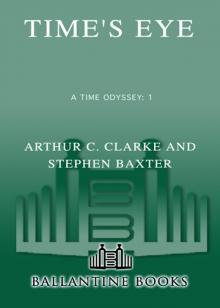 Time's Eye
Time's Eye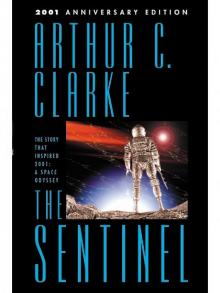 The Sentinel
The Sentinel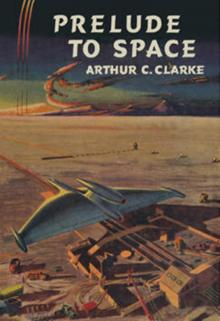 Prelude to Space
Prelude to Space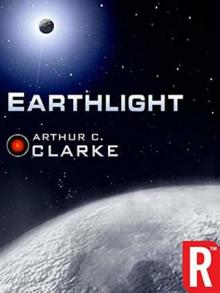 Earthlight (Arthur C. Clarke Collection)
Earthlight (Arthur C. Clarke Collection) 2001: A Space Odyssey
2001: A Space Odyssey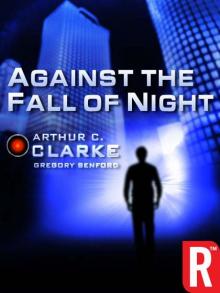 Against the Fall of Night
Against the Fall of Night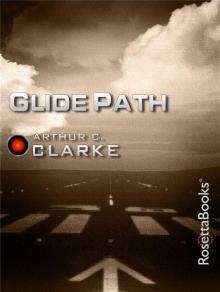 Glide Path
Glide Path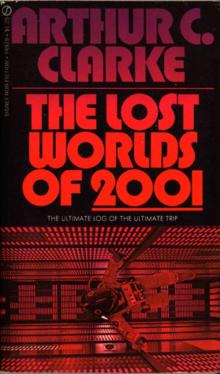 The Lost Worlds of 2001
The Lost Worlds of 2001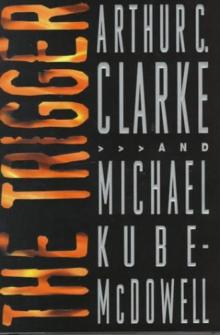 The Trigger
The Trigger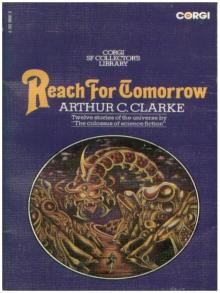 Reach for Tomorrow
Reach for Tomorrow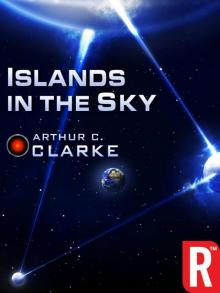 Islands in the Sky
Islands in the Sky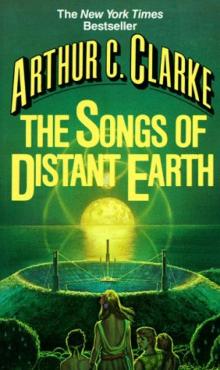 The Songs of Distant Earth
The Songs of Distant Earth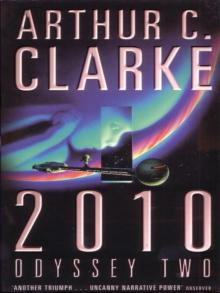 2010: Odyssey Two
2010: Odyssey Two Childhood's End
Childhood's End 3001: The Final Odyssey
3001: The Final Odyssey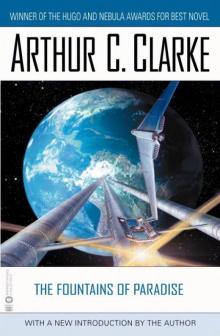 The Fountains of Paradise
The Fountains of Paradise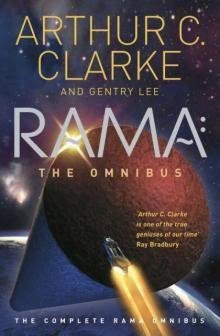 Rama: The Omnibus
Rama: The Omnibus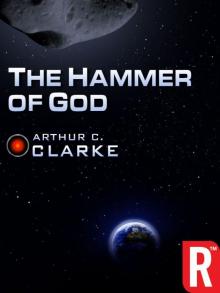 The Hammer of God
The Hammer of God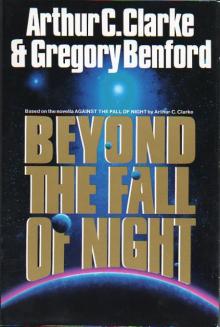 Beyond the Fall of Night
Beyond the Fall of Night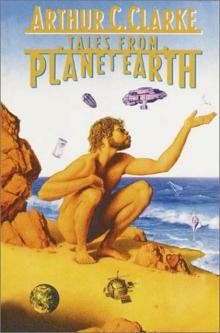 Tales From Planet Earth
Tales From Planet Earth 2061: Odyssey Three
2061: Odyssey Three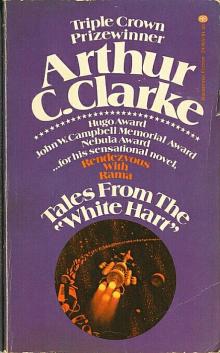 Tales From the White Hart
Tales From the White Hart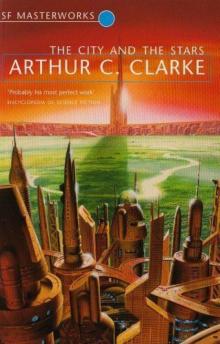 The City and the Stars/The Sands of Mars
The City and the Stars/The Sands of Mars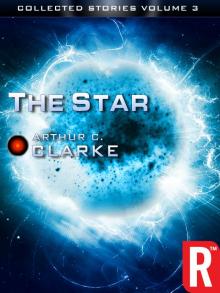 The Star
The Star Imperial Earth
Imperial Earth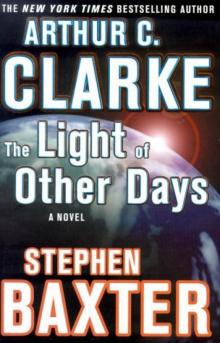 The Light of Other Days
The Light of Other Days Firstborn
Firstborn The Other Side of the Sky
The Other Side of the Sky Cradle
Cradle The Wind From the Sun
The Wind From the Sun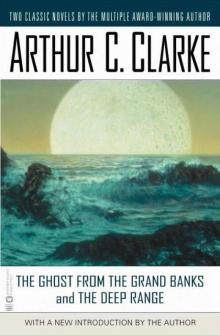 The Ghost From the Grand Banks and the Deep Range
The Ghost From the Grand Banks and the Deep Range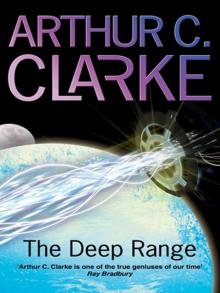 The Deep Range
The Deep Range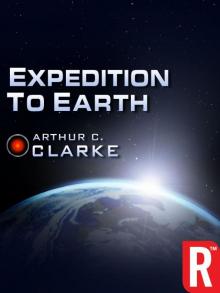 Expedition to Earth
Expedition to Earth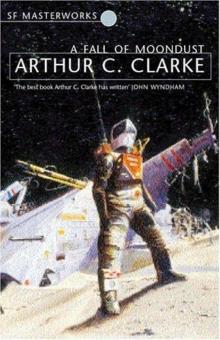 A Fall of Moondust
A Fall of Moondust Dolphin Island (Arthur C. Clarke Collection)
Dolphin Island (Arthur C. Clarke Collection)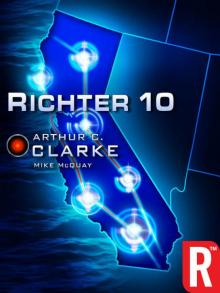 Richter 10
Richter 10 The City and the Stars
The City and the Stars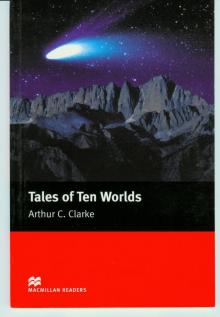 Tales of Ten Worlds
Tales of Ten Worlds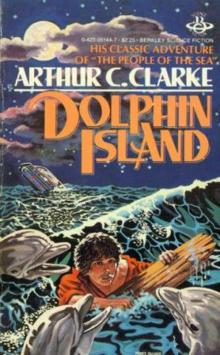 Dolphin Island
Dolphin Island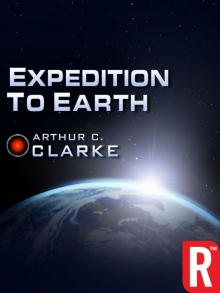 Expedition to Earth (Arthur C. Clarke Collection: Short Stories)
Expedition to Earth (Arthur C. Clarke Collection: Short Stories) Sunstorm
Sunstorm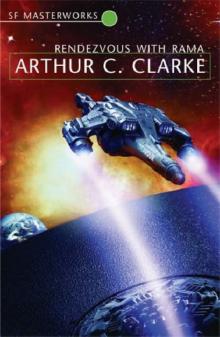 Rendezvous with Rama
Rendezvous with Rama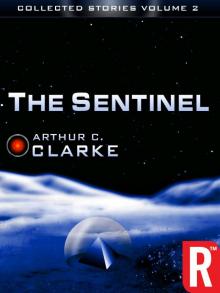 The Collected Stories of Arthur C. Clarke
The Collected Stories of Arthur C. Clarke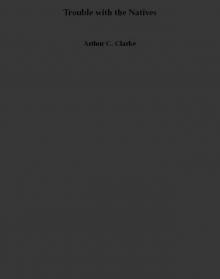 Trouble with the Natives
Trouble with the Natives Rama Revealed r-4
Rama Revealed r-4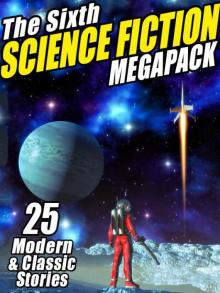 The Sixth Science Fiction Megapack
The Sixth Science Fiction Megapack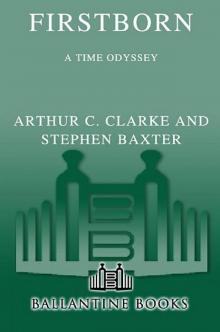 Firstborn to-3
Firstborn to-3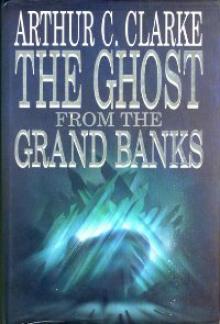 The Ghost from the Grand Banks
The Ghost from the Grand Banks Into the Comet
Into the Comet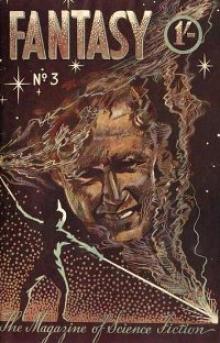 The Fires Within
The Fires Within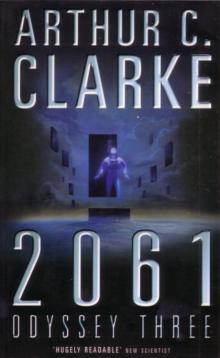 2061: Odyssey 3
2061: Odyssey 3 The Ninth Science Fiction Megapack
The Ninth Science Fiction Megapack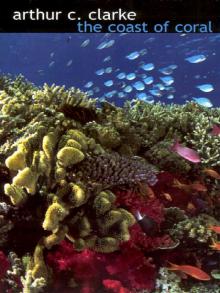 The Coast of Coral
The Coast of Coral The Ghost from the Grand Banks (Arthur C. Clarke Collection)
The Ghost from the Grand Banks (Arthur C. Clarke Collection)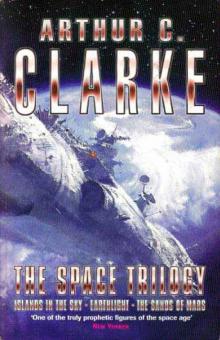 The Space Trilogy
The Space Trilogy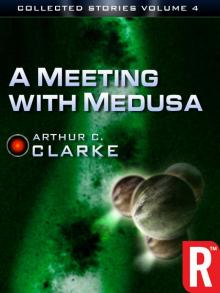 A Meeting With Medusa
A Meeting With Medusa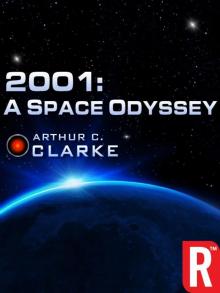 2001: A Space Odyssey (Arthur C. Clarke Collection: The Odyssey)
2001: A Space Odyssey (Arthur C. Clarke Collection: The Odyssey)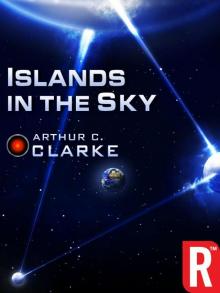 Islands in the Sky (Arthur C. Clarke Collection)
Islands in the Sky (Arthur C. Clarke Collection)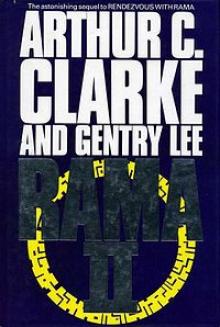 Rama II r-2
Rama II r-2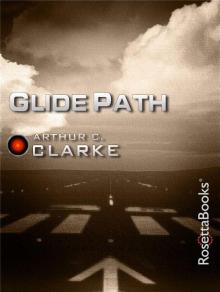 Glide Path (Arthur C. Clarke Collection)
Glide Path (Arthur C. Clarke Collection)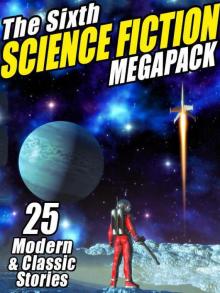 The Sixth Science Fiction Megapack: 25 Classic and Modern Science Fiction Stories
The Sixth Science Fiction Megapack: 25 Classic and Modern Science Fiction Stories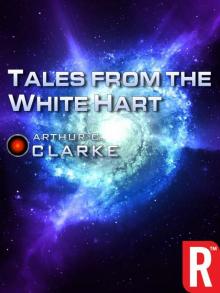 Tales from the White Hart (Arthur C. Clarke Collection: Short Stories)
Tales from the White Hart (Arthur C. Clarke Collection: Short Stories)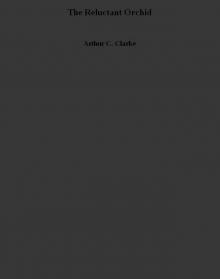 The Reluctant Orchid
The Reluctant Orchid